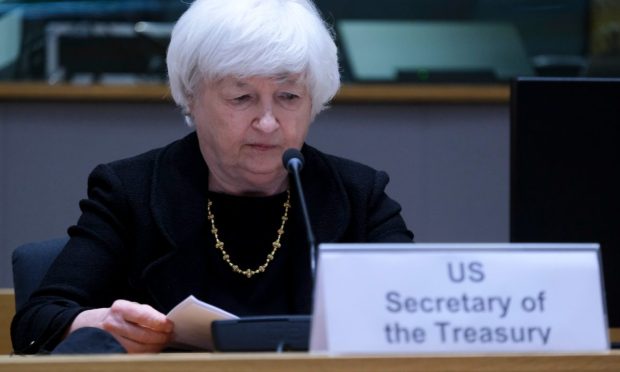Aiming for Stability, Bank Deposit Guarantees May Be No Guarantee

These past few weeks made it seem like everything happened, everywhere, all at once, to the banking system.
And in a signal as to just how much has changed, as reported here, Treasury Secretary Janet Yellen has said the federal government, seeking to ensure safety and security and confidence in smaller banks, could take some of the same steps it took this month to stave off deposit runs.
In comments made to the American Bankers Association’s summit in Washington, D.C., Yellen said that, with a nod to the uninsured deposit backstops that had been given to Silicon Valley Bank and Signature Bank, “similar actions could be warranted if smaller institutions suffer deposit runs that pose the risk of contagion.”
Yellen’s comments come against a widening debate on Capitol Hill, and in the banking industry itself, about the risks and rewards of that backstopping.
The rewards have been somewhat apparent these last few days — the contagion effect, at least for now, has been contained. At this writing, markets are cheering the support that Yellen has extended to the banks, as the broader market gauge, the S&P 500 Stock Index, is up more than 1% in intraday trading. Regional bank stocks are rebounding sharply. First Republic, by way of example, is up 35% headed into the close of trading.
It may be the case that universally insuring all deposits has the beneficial effect of giving individuals — and, critically, businesses — the sense that they can carry on commerce and their daily financial lives as usual. Businesses tend to be the banking clients that carry the most outsized balances at banks. Consumers, per data from the Federal Reserve, had a recent average of $41,600 in their transactional accounts, which is far below the $250,000 insured cap that has been in place. Small businesses, of course, need to have assurances on banking, given the fact that, per statistics from the U.S. Small Business Administration, smaller companies generate more than 40% of the nation’s economic activity.
In the backstopping scenario, the current setup is that banks pay into a fund that is used to pay depositors the insured amount (in this case, still $250,000 for financial institutions (FIs), absent the ones that have seen uninsured deposits made whole).
Moral Hazard and Ripple Effects
Removing the limit offers up the possibility, as we’ve detailed here, moral hazard. But beyond that is the real risk that people might think that risk isn’t real because the authorities will make good on whatever happens. Not only do clients (consumers or enterprises) not need to be overly concerned with the condition of their FI, the FI can be less concerned about the condition of its clients — especially the enterprise clients. Companies with less efficient business models, even risky ones, could conceivably be welcomed into the banking system with less scrutiny — which ultimately causes trouble in other ways (paying back loans, perhaps). The stability thought to be engendered by universal deposit insurance may have unintended consequences.
The idea of backstopping deposits has another Catch-22: It’s been floated as a temporary fix, but once in place, especially at smaller banks, how and when can that guarantee be removed? Will its removal spark jitters about bank deposit security, leading to a cycle of fear and then efforts to calm that fear?
There are no easy fixes, and the optimism sparked by insuring all deposits — even for a price — might prove fleeting.

